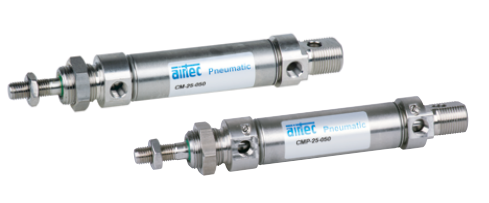
Now that we have discussed the important factors to consider, let's walk through a step-by-step guide on how to size a pneumatic cylinder:
To calculate the required force, you should know the mass of the load and the acceleration required. If your application is a simple push or pull operation, you may just consider the weight of the load and any potential friction.
Force (F) = Mass (m) * Acceleration (a)
If you're dealing with a lifting operation, don't forget gravity (
Example: If you have a load of
F = m * a =
F = m * a =
Once you have the force, you can find out the bore size, which is the diameter of the piston inside the cylinder. The relationship between the force and the bore size is dictated by the air pressure in the pneumatic system.
Bore Diameter (D) = √[(4*Force) / (π*Pressure)]
The pressure will be in Pascal (
Example: If the force required is
D = √[ (4
Now, choose a cylinder with a bore size that matches or slightly exceeds the calculated area.
The stroke length is the distance the piston can travel inside the cylinder. This is generally dictated by the application’s unique requirements, so there isn't necessarily an equation for it. If the cylinder needs to move a load a certain distance, then the stroke length needs to be at least that distance.
Example: If the application requires pushing an object
The rod diameter is typically chosen from standard sizes based on the bore and stroke length. Larger rods are more resistant to buckling and are often necessary when the stroke length is long.
You may want to determine how quickly the cylinder will complete its stroke. Calculate this using the following formula:
Speed = (Flow Rate / Cylinder Area) * 60
Flow Rate should be in liters per minute (LPM) and Cylinder Area in cm² for the equation.
Note: This guide provides general steps. Consult with pneumatic cylinder manufacturers for specific applications.